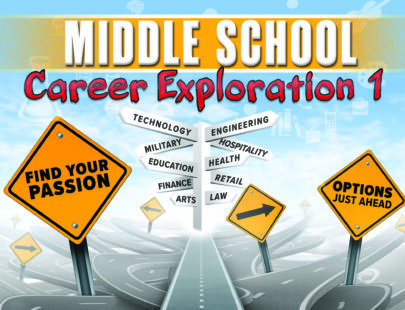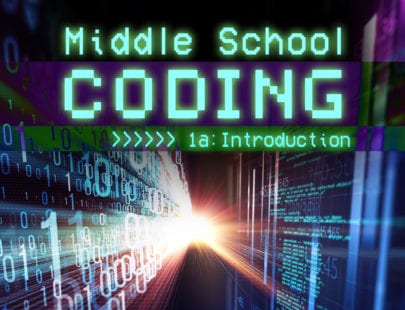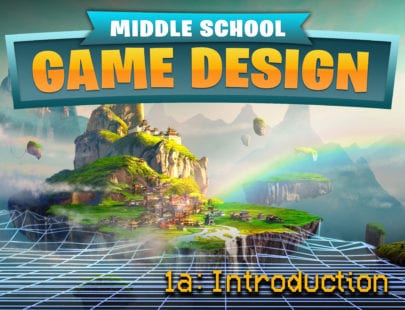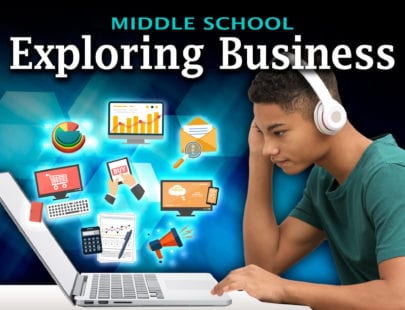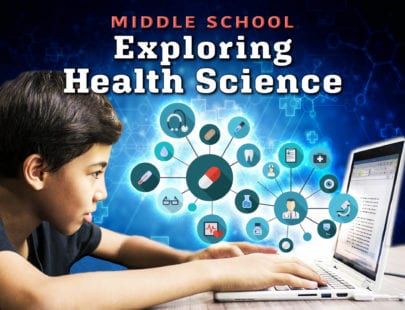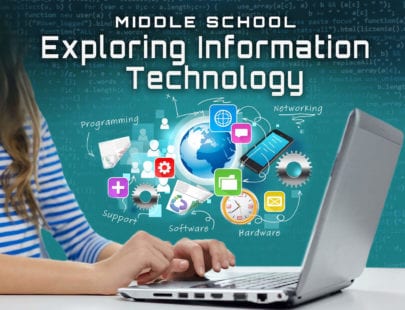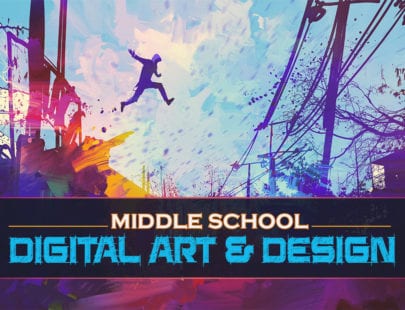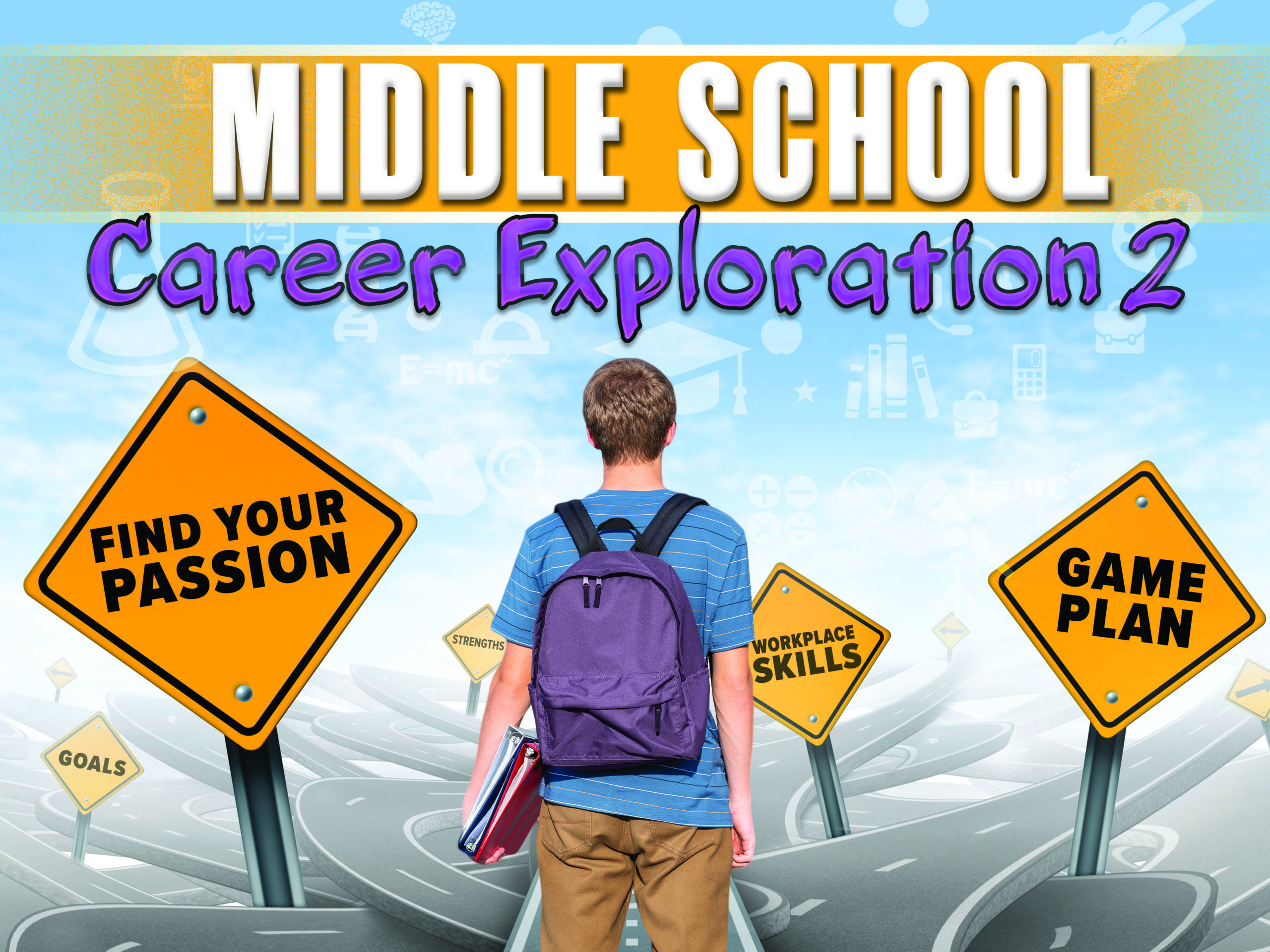
Middle School Career Exploration 2
Imagine that it’s 20 years from now. What career do you see yourself in? What do you imagine that you’ll be doing? In this course, you’ll explore more careers and what it takes to succeed in different fields. You’ll learn more about what steps are needed to prepare for your career and how to compare the pros and cons of different career choices to find one that’s best for you.
Units at a Glance
Unit 1: Finding Your Strengths and Turning Them into a Career
It may seem pretty early for you to be thinking about a career, but now is actually the perfect time to start considering what you want your future to look like. You’re old enough to know what you like and don’t like, to have a good idea of what you’re good at, and to have seen enough different people working at different kinds of jobs that you can start creating a roadmap for your future. The first steps? Figuring out what you are good at, determining what makes you the most excited, and finding the kinds of careers that combine your talents and passions.
What will you learn in this unit?
- Identify the six career fields and sixteen career clusters.
- Understand how the Holland Test can help you find interesting careers based on your personality type.
- Explain the RIASEC categories and the types of careers that fit in each type.
- Discuss how your personality traits and strengths can be good guidelines for choosing a career path.
Unit 2: Setting Goals and Creating a Game Plan
One of the most impressive uncharted territories to explore is your own future. You’ve spent some time thinking about different careers, your own strengths, and maybe even thinking about what you want to do as a career. But once you have an idea of where you want to go, how do you get there? If you’re taking a road trip, what do you do? You probably turn on your GPS and let Siri guide you to your destination. Sadly, life doesn’t have a Siri quite yet, and the route you need to take to get to the future you want is going to be one you create on your own. How can you create that roadmap? How can you know what your destination will be and what pit stops you’ll need to make along the way? Goal setting and action plans will be your roadmap to your future, and you’re in control of it.
What will you learn in this unit?
- Explain how visualization can help you achieve your goals.
- List at least five different categories of goals and explain the difference between short- and long-term goals.
- Define SMART goals and explain why it’s important to set them.
- Understand how to turn goals into an action plan.
- Describe why failure is an essential part of any action plan.
Unit 3: Working on Your Workplace Skills
Wait—workplace skills? How can I have workplace skills before I even know what career I want to go into? That might be what you’re thinking, and it makes sense. Usually when people think about the skills they’ll need to get a job, they think about the technical skills they might need to learn in order to do the job they want. But more and more, employers are looking for a combination of skills that are less about the job and more about the person behind those really technical skills that you’ll need to get the job done. If that seems like bad news, think again. These workplace skills are the kind you can develop now—and you’ll learn how!
What will you learn in this unit?
- Recognize the three major types of soft skills that employers are looking for.
- Identify what leadership skills are and how to develop them.
- Explain why organizational skills are important in any job.
- Understand interpersonal communication and how it can affect workplace success.
- Discover how you can develop workplace skills now.
Unit 4: Experimenting with Careers, Part One
Once you’ve learned more about who you are and what you like to do, it’s time to start thinking about how that information translates into a career. Remember that your career should reflect your personality and your interests, while also providing for your needs. The next step on your road to finding a career is to take a look at a snapshot of what careers in the areas that you’re interested in might look like. Since it’s probably not possible to follow around people in all of the career clusters that we’ve learned about, you will get a glimpse into a day in the life of some diverse and interesting careers from each of the six career fields. We’ll start with an overview of some of the fastest growing jobs and industries, as well as careers in agriculture, engineering and technology, and business.
Your goal? Pay attention not just to what people do, but also to how you feel when you read about their jobs and to the other opportunities in that career field. No one knows you better than you do! While it may be a little early to know exactly what job you’ll be looking for in ten years or so, you can start to explore the direction you want to pursue!
What will you learn in this unit?
- Identify the fastest growing industries and careers.
- Recognize careers that fall within the three career fields covered here.
- Describe the main responsibilities for the careers that are described within each of the fields.
- Understand the connection between the responsibilities of a career and an individual’s personality type.
- Define entrepreneurism and understand what careers may help develop entrepreneurial skills.
Unit 5: Experimenting with Careers, Part Two
Are you excited about the future? You should be! You’re getting a chance to imagine what you want your life to be. You’ll learn how to turn those visions into step-by-step realities. But first, let’s dive into the careers that focus on people: serving them, entertaining them, and healing them. Keep paying attention to what excites you, what interests you, and what you’re curious to learn more about—because those are signs that you might just have found the right career field for you!
What will you learn in this unit?
- Identify the types of careers in the communications and information services, health science technology, and human services career fields.
- Analyze the talents and skills needed for these types of careers.
- Explain why workplace safety is essential to any successful career.
- Identify which career fields seem the most interesting to you.
Unit 6: Gaining Experience
Experience—it’s a word that can be scary. It’s especially scary when it’s time to find a job. But if you’re smart, and plan ahead, you can find amazing opportunities to get experience. You may even be able to get experience in several different career clusters to see which one you like best. How can you do that AND stay on target with your coursework? You’ll learn how to make the most of your time and get a head start on the career you want. It might even be fun!
What will you learn in this unit?
- Discuss how extracurricular activities can help you develop career experience.
- Analyze how your course choices can help you in your career path.
- Explain what a CTSO is and how it can help you gain experience and skills in your career.
- Identify nine different CTSOs and the types of careers they focus on.
Unit 7: Getting the Training You Need
If you want the job, you need to be qualified for it. What does that mean? It means that, if you want to build houses, you need to know how to use the tools, read the blueprints, and understand the safety codes. If you want to cure cancer, you need to know how the human body works, how cancer cells work, and how the tools you’ll use in the lab will help you answer questions. In short, you need specific training so that you can do any skilled job well. But what kind of training do you need? To help you answer that question, you’ll learn about the different educational options you have. You’ll also learn about the questions you need to ask yourself in order to make the right decisions for your future.
What will you learn in this unit?
- Explain the differences between two-year colleges, four-year colleges, professional schools, and graduate schools.
- Understand the skills gap and the types of skilled jobs that are available without a college degree.
- Describe the differences between secondary and post-secondary careers and technical training.
- Analyze the purpose of externships, internships, and apprenticeships.
Unit 8: Preparing for a Job
At the end of the path of discovering what you love, setting goals, and getting training and experience is your final goal: a career you love. But going from being ready for a career to actually having the job is a process in itself. How do you find the jobs that are best for you? How do you know that you’re the right person for that job? When you find that job, how can you show that you’re the best person for it? How can you take your excitement, enthusiasm, confidence, and experience and show it to the hiring manager and ask them to take a chance on you? You’ll need to understand the job market, learn to strategically read a job post, create a resume and cover letter that stand out, and impress interviewers with your confidence. It’s time to put all of those skills and years of training to the test. It’s time to get the job you love!
What will you learn in this unit?
- Understand how each job field is different and identify strategies for reading job postings.
- Ask specific questions to find the right jobs to match your training and experience.
- Understand the different types of resumes and the purposes for each.
- Explain at least four ways you can improve a resume.
- Describe how a cover letter should look and how to customize it to the job posting.
- Name five tips to having a successful interview.
- Understand the role that summer jobs, internships, and volunteer opportunities have in developing these skills.
Required Materials
Physical
- Video recording device like a camera or a phone
Software
- Word processing software
- Slide presentation software
Optional
- Paper, pencil, posterboard and markers
